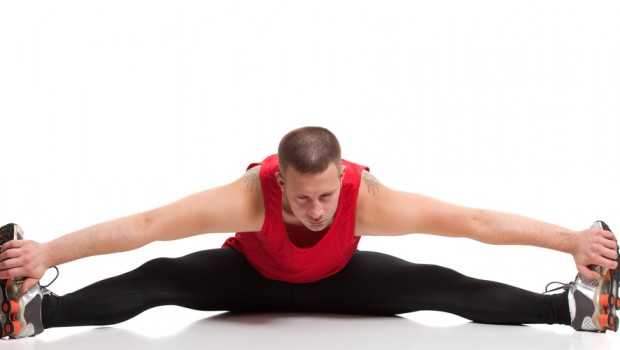Stretching before running may create tiny micro-tears in the muscle fibers and tendons which may effect endurance capacity and injury.
- micro-tearing from stretching has been shown to temporarily comprise the ability of the muscles and tendons to absorb energy and shock for up to 1 hour
- stretching increases the fragility and stress-susceptibility in the muscle fiber
- researchers propose that stretching before a run induces structural changes to muscle fibers and tendons
- stretching induced structural changes may cause certain muscles and tendons to be less responsive during running which in turn, may result in pre-mature fatigue, or injury
 Stretching Before Running Leads Injury
Stretching Before Running Leads Injury
One of the rationale’s behind Run Forefoot is to promote natural running. Running comes natural to humans because early humans (hominids) used long distance running as the primary hunting method. Do you think our ancestors, 4 millions years ago, stretched before they ran?
Evidence on Protective Effects of Stretching is Lacking, HUGELY
Who said runners needed to be flexible? Our ancestors 3 millions years ago ran long distances daily while barefoot, never stretched, and did fine.
Too Many Questions, No Answers
If stretching before running is, in some way, beneficial to a runner, what is the right amount of flexibility needed to be injury free, or to gain efficiency? This has not been quantified yet.
Or, would stretching one muscle group effect the function of other neighboring muscle groups? This remains poorly understood as well.
To what degree does stretching before running reduce injury in well-conditioned elite runners, or in well-conditioned recreational runners? Again, this remains unclear.
Just Warm-Up!
Too many unanswered questions remain about the role of stretching before running on injury prevention. Therefore, it is probably not the greatest idea to stretch before a run.
I went through a period in my training where I incorporated calf stretches before running, until I partially tore my Achilles tendon. When I referred to the scientific literature, I discovered that one of the risk factors for an Achilles tear was ‘aggressive calf stretching’. I never stretch now and have felt great ever since.
Accumulating research suggests an effective way to prevent running injuries is to do proper warm-ups before running:
- warm-ups increase heart rate and muscle temperature and has been shown to be effective in injury prevention in runners compared to stretching
- more research indicates a warm muscle is less likely to get injured than if the muscle was stretched
The best warm ups for me is a nice light jog for 15 minutes, sometimes I walk fast for a 2-3 minutes during this time. Skipping rope is another great way to warm up. Butt-kicking drills are also great.
The Take Home Message
My theory is the human body functions best in terms of movement and energy expenditure when in its natural context such as walking and running.
Activities such as stretching may be an unnatural action for the body because if it wasn’t, we as humans would be more flexible than we are. Stretching is for gymnasts, not necessarily for runners.
More From Run Forefoot:
- Best Shoes for Forefoot Running
- What Happens When You Heel Strike in Minimalist Shoe?
- How Barefoot Running Protects the Hips
- Run Barefoot If You Run a Treadmill
- Best Books for Barefoot Running
References:
Armstrong, RB. Mechanisms of exercise-induced delayed onset muscular soreness: a brief review. Med Sci Sports Exerc (1984);16(6):529-38.
Gleim et al. The influence of flexibility on the economy of walking and jogging. J Orthop Res (1990); 8(6):814-23.
Nelson et al. Chronic stretching and running economy. Scand J Med Sci Sports (2001); 11(5):260-5.
Bretta Riches
BSc Neurobiology; MSc Biomechanics candidate, ultra minimalist runner & founder of RunForefoot. I was a heel striker, always injured. I was inspired by the great Tirunesh Dibaba to try forefoot running. Now, I'm injury free. This is why I launched Run Forefoot, to advocate the health & performance benefits of forefoot running and to raise awareness on the dangers of heel striking, because the world needs to know.
Latest posts by Bretta Riches (see all)
- Are Minimalist Shoes Good for Seniors? YES! - 14/04/2024
- BIG Deals On Running Gear And More! - 09/04/2024
- Why Are My Feet Tired After Running? - 04/04/2024

Many running authors seem to think humans took to running to chase down animals to eat but archeologist and electron microscopic examination of ancient human teeth seem to show that humans initial adaptation to running vast distances was motivated by the need to safety and efficiently go from fruit grove to fruit grove until for unknown reasons they found themselves facing starvation out in the savananas and tundras. Our bodies are still today optimally designed to thrive on a diet of primarily fruits supplemented with various greens and veggies in their raw and most potent stages of life.
9nu7un
8skkz3
h92wrs